AN ANSWER OR A DIFFERENT PERSPECTIVE - FAQ
Ostomy surgery is a life-saving operation which can be necessary for people of all ages, sexes, creeds and professions. Once the surgery is over you most go on to live an active, meaningful and healthy life. However, depending on your life situation you may be left with a lot of questions relating to your unique circumstanses. Everything from more abstract questions like how does this procedure affect my self-image? and what are the effects on my social life? will the hernia grow bigger? to the more concrete questions like how can I support my hernia? and how tight should I wear my support garment?
Below we have gathered a number of answers to common questions which might help you with finding answers or a provide you with a different perspective on the questions you might be struggeling with in your daily life.
If you have questions that have not been answered in this FAQ, we advise you to consult your stoma care nurse or your surgeon for more information.
SPECIFIC QUESTIONS RELATING TO THE CORSINEL PRODUCT RANGE
Do you have additional questions in relation to any Corsinel products your nurse or doctor have no answer for we advise you to contact your local Corsinel dealer.
QUESTIONS REGARDING STOMA
The terms ‘stoma’ and ‘ostomy’ are often used interchangeably. A stoma is an opening on the abdominal surface which has been surgically created to lead faeces or urine flow. Reasons for surgery are many. It could be Cancer, Ulcerative Colitis, Crohn’s or Inflammatory Bowel Disease, diverticular disease, birth defects or trauma. Individuals of all ages can have a stoma.
There are three main types of stoma – colostomy, ileostomy and urostomy. All are lead to the abdominal surface. A colostomy is the term used to describe an opening from the colon, also known as the large intestine. An ileostomy is the term used to describe an opening from the small intestine, specifically the ileum. A urostomy is the term used to describe an opening for urine flow.
Your stoma will be placed somewhere on your abdomen. It is always the health care professionals who select the stoma site. Considerations regarding stoma site selection include: Length, size and shape of abdomen, exposed abdomen in various positions, occupation, clothing, use of devices, physical issues, mobility, eye sight, dexterity, self care ability, surgeon and patient preference. Only in emergency surgeries it may be difficult to take all factors into consideration.
In most cases, a stoma will affect your own body image and your own body perception negatively. You are simply not used to having an extra body part on your abdomen that bulges and feels so strange. With a pouch attached, it may feel even more bulky. However, to other people your stoma will barely be noticeable under your clothes. That may, however, not be the feeling you have yourself.
When you have a stoma, you are at risk of having complications. However, it is very unlikely that you will experience all complications associated with a stoma, and the complications you may have can often be addressed. You should never accept complications. Your stoma care nurse possesses much knowledge about complications and how to find solutions and you should contact her for advice.
Consult your stoma care nurse about the most common complications like stoma blockage, skin problems, stoma retraction, stoma prolapse and leakage. One of the most common complications is parastomal hernia, which many people develop weeks, months or even years after stoma surgery.

4-WAY
STRETCH
The textile will adapt to the body shape at all times ensuring that the product will provide the necessary compression needed for recovery, as well as the best possible comfort at all times during prolonged wear.

TARGETED COMPRESSION
AND FIXATION
Targeted compression and fixation means that our products are designed to provide the necessary compression and fixation exactly where needed. By controlling compression on the scar tissue, the healing process advances faster and patient comfort is hightened. The compression zones are specially designed into each product based on indication.

SEAMLESS
KNITTING
For optimum healing, the surgery site needs rest. That is why our products are designed to guarantee no seams in the wound or scar area and at any other critical sites of the applied area. This provides maximum skin friendliness and prevents pressure marks, as well as irritation of skin and tissue.

FACT-BASED
SIZING
When it comes to medical textiles and post-op garments, no size fits all. That is why we base all our sizes on three parametres; statistical body knowledge, comfort stretch measurements and extensive knowledge and experience with the combination of knitting methods in different materials. The combination of these 3 parameters defines our size defintion, ensuring perfect fit at all times.
QUESTIONS REGARDING HERNIA
When stoma surgery is performed, an incisional hole is made in the abdominal muscles, causing an abdominal weakness. In some cases, this weakness in the abdominal muscles allows a loop of bowel to protrude out, resulting in a bulge around the stoma. This bulge is known as a parastomal hernia.
Symptoms of a parastomal hernia include a bulge either around or next to your stoma. Other symptoms are an asymmetric appearance, feeling of lopsidedness and maybe heavy sensation of the hernia. The stoma diameter may also enlarge, the stoma may get flatter, the skin around the stoma may seem stretched and thin, and changes in stool excretion pattern may appear. You do not necessarily experience all symptoms mentioned.
In many cases, a hernia causes no problem. However, you may experience that the bulge grows bigger, which makes it more visible and thus affects your appearance. This may lead to social isolation, and it may limit your daily activities in general. Although rarely painful, a parastomal hernia may become inconvenient, especially as it grows bigger, since it may cause an uncomfortable dragging sensation.
If the hernia grows bigger, you may also find that it covers your stoma, preventing you from seeing it and adequately care for it. If this occurs, it is important to seek advice from your stoma care nurse, who will review pouching options with you. Another option is to consult your surgeon to discuss options for surgical repair of the hernia.
Stool excretion patterns may also change due to the hernia. Stool may accumulate and come out explosively in larger amounts than usual. Parastomal hernias may also change your stoma shape and size. This change may cause more frequents leaks of your appliances or may cause skin irritation around your stoma. On rare occasions, the hernia may cause the stoma to not function as often or even to cramp when it tries to function. More seriously, you may find that the hernia prevents the stoma from functioning. This may cause abdominal distension. Consult your stoma care nurse or your surgeon immediately, if you experience these symptoms, as surgery may be indicated.
Most hernias can be managed without surgical intervention, by using support garments. Based on your hernia, your stoma care nurse can identify what support level and what garment – belt, tube or pant – is appropriate for you.
On rare occasions, surgery may be required for hernia repair. However, even after surgery, the hernia may reoccur. That is why parastomal hernias most often are managed without surgery.
In many cases, the size of your hernia will probably increase as time goes by, if no intervention is made.
Not all, but many people develop parastomal hernias after stoma surgery. In most cases, the hernia develops within 2 weeks and up to two years after stoma surgery. However, the risk of developing a hernia is lifelong.
The risk increases with age, obesity, pregnancy, lung conditions like chronic cough or COPD, strenuous work, smoking and strenuous physical activity. If you are a male, you are also at higher risk.
A study has shown that abdominal exercises combined with the use of a support garment may prevent hernias from appearing[1]. Your stoma care nurse may know what exercises are relevant for you for prevention of a parastomal hernia. Combine your exercises with the wearing of a support garment, avoid straining and heavy lifting, maintain a healthy weight, because being overweight in most cases place additional strain on your abdominal muscles.
[1] Study: Thompson & Trainor: “Prevention of parastomal hernia: a comparison of results 3 years on”, 2005
QUESTIONS REGARDING CORSINEL
Living with a stoma and hernia may have a great impact on a person’s everyday life. A stoma and hernia may challenge a person’s mobility, body image and sense of self-esteem. To help you live your life as you like, Corsinel support garments are safe and reliable products for discretion, fixation, support of your stoma pouch, reduced leakage risk and support of your hernia. The Corsinel range offers various products, specifically designed to help you with your daily stoma or hernia challenges.
Corsinel support garments are developed in close cooperation with ostomates, doctors and nurses to ensure best performance, function and highest quality at all times.
Furthermore, Corsinel support garments are designed with body anatomy in mind. It is crucial that the garments fit perfectly to make a difference and be used.
Corsinel support garments will often be worn all day long and maybe also at night. That is why the garments are designed with high wearing comfort in mind. They are specifically designed to be wearing aids, addressing and easing your challenges in your daily life.
A study has shown that abdominal muscle exercising combined with hernia support garments increase the success of hernia prevention[1].
It is also a general belief amongst many health care professionals that the use of support garments may prevent hernia formation[2].
[1] Study: Thompson & Trainor: “Prevention of parastomal hernia: a comparison of results 3 years on”, 2005
[2] Article: President of the Colostomy Association, UK, and Consultant Colorectal Surgeon, Mr. Ian Daniels FRCS: “Parastomal Hernias”, 2015
Wearing no support garment may encourage the hernia to grow bigger. Corsinel hernia support garments have been proven to exert targeted support on the hernia, providing optimum control and management. This support may also prevent further hernia protrusion.
Corsinel is designed from a special constructed 4-way stretch fabric that expands and contracts according to body proportions. This means that the fabric will always adapt to your stoma and your appliances. Your stoma will function well under the fabric, and you do not necessarily need a hole for your stoma and your stoma pouch.
Corsinel stoma and hernia garments are made of a strong and durable fabric that supports a hernia optimally. This is confirmed by several stoma care nurses and users. If you have a giant hernia, Corsinel is normally not recommended. In this case, you may need a tailor made garment instead.
A stoma and hernia may affect self esteem and body image negatively due to an altered appearance. In worst case, this may lead to isolation. Corsinel offers you a more even and slim appearance, counteracting the feeling of being lopsided.
Corsinel is specifically designed to fixate and support stoma pouches. The fabric used in Corsinel support garments is carefully chosen with optimum support and comfort in mind, making you feel safe and confident in your daily life. The combination of the knitting of the fabric and the design of the Corsinel garment results in excellent support of an ostomy pouch.
Two of the biggest concerns amongst ostomates are often the leakage risk and the content noise. We are aware of this, and since your concern is our concern, we have designed Corsinel to not only support an ostomy pouch to minimize leakage risk, but also to reduce content noise at the same time. With Corsinel garments we have done our outmost to address these concerns to make you feel safe and confident at any time.
Corsinel is made of a flexible 4-way stretch fabric. Due to the flexibility of the knitted material, Corsinel will expand and contract in all directions - just like skin does, always ensuring an optimum and unique fit no matter body proportion.
Your stoma care nurse offers advice on how tight your Corsinel garment should be to offer the best support for you. Most importantly, you must always feel comfortable when wearing Corsinel. If you feel uncomfortable, it is important that you remove the garment and contact a stoma care nurse for advice.
Living with a stoma has an impact on a person’s everyday life. It is our mission to reduce this impact as much as possible and to make healthcare more human. That is why we have designed the Corsinel range. No matter which situation you face in everyday life, a garment in the Corsinel range can assist you: When working, when gardening, doing sports or other physical activity, when shopping – even when sleeping if you prefer. Corsinel is an essential supplement to your ostomy appliances.
Every ostomate has different needs. Some ostomates need additional support of their ostomy pouch for physical activity, some ostomates focus more on an improved appearance. Some ostomates develop a hernia next to or around a stoma, some do not. Corsinel offers a wide range of products, all with different support levels depending on the challenges you experience.
Generally, we advise that you contact a stoma care nurse for advice on support level. A rule of thumb is that if you do not have a hernia, light support garments are generally useful day to day. If you are doing activities, where you feel you need an extra level of support, a medium support garment would be advised.
If you have a hernia, the maximum support garments will generally always be the first recommended product, as these will provide you with superior level of support. However, this is dependent on your hernia size and general circumstances. If you find the maximum support garments uncomfortable, the medium support garments could be appropriate for your needs.
Various factors influence the choice of height of your Corsinel garment. It depends on stoma location and your abdominal circumference. It also depends on the length of your torso and the size of your hernia. For optimum support and comfort, always ensure that the support garment covers the entire herniated area. Always ensure that the height of your Corsinel garment is comfortable to wear. If in doubt, consult your stoma care nurse for advice.
Most ostomates do not wear Corsinel high compression at night, but the need for nighttime garments is individual. If you prefer, you can wear light or medium support during night.
It depends on your ostomy and your ostomy challenges or complications, such as parastomal hernia. Consult your stoma care nurse for advice on which Corsinel product to choose.
In many cases, your stoma care nurse will help you find the right size. For easy fitting, each Corsinel product also has a size chart and an instruction on the insert showing where to measure to find the right size in the size chart.
Corsinel garments are all machine washable. This means that you can wash your Corsinel with your laundry. Corsinel can be tumbledried as well. A detailed care handling instruction is provided in the product and on the insert in the product bag. You should always have two Corsinel garments at hand: One to wear and one to wash.
It is individual for how long you should wear a Corsinel. For some, it may be only for physical activity, for others it may be both day and night. If you do not know for how long you should wear your Corsinel, seek advice from your stoma care nurse.

